Due to its many valuable properties such as flexibility, durability, and resistance to wear and tear, Engineered Thermoplastic Polyurethane (ETPU) has found its way into different industries over the years. Nevertheless, with the continuous use of this material in manufacturing various items ranging from car components to electronic gadgets concerns have been raised about its poisonous nature too. With this article we mean to investigate all sides of ETPU toxicity for a wider comprehension on how it affects health and environment. We want our readers to have a complete picture around the subject by looking at what makes up ETPU chemically, how it behaves in different environmental settings as well as considering existing regulatory benchmarks. Whether you are an industrialist, buyer or just someone keen on materials science; through this manual you will be furnished with vital information regarding safety precautions while using ETPUs.
What is Engineered Thermoplastic Polyurethane (ETPU) and How is it Made?

https://schaumaplast.com/
Engineered thermoplastic polyurethane (ETPU) is an exclusive polymer with a blend of suppleness, resilience and resistance to different environments. In order to achieve ETPU, there is a need for carrying out the process of polymerization by reacting isocyanates with polyols in presence of catalysts as well as other additives; which then produces elastic chains made up of polyurethane. Moreover, this material undergoes another physical foaming stage where it gets improved by having numerous closed-cell bubbles distributed throughout its structure thereby making it lighter but still tough enough to withstand heavy-duty usage. Therefore these steps of production combine together creating such kind that can be easily shaped by molding or extrusion thus being applicable in various fields.
What are the Key Characteristics of TPU?
A lot of features are attributed to Thermoplastic Polyurethane (TPU) which has made it a highly demanded material in many industries since it is very versatile. Among these attributes, one of the best is that it has great wear resistance so this makes them suitable for use in products like shoes or other industrial parts that might get easily worn out. TPU also exhibits good flexibility and elasticity hence can be stretched or bent without losing its shape as well as strength. This material equally stands out because of its excellent resistance to oil, grease and various chemicals which helps increase their durability under harsh conditions. Moreover, TPU shows fair transparency plus optical clarity coupled with admirable weather ability which means they can endure long hours under direct sunlight among other environmental factors without breaking down. All these qualities therefore contribute towards making TPU strong enough for applications such as car components; medical tools; consumer electronics devices among others related with sports activities.
How is ETPU Different from Other Polyurethane?
Polyurethane, or ETPU (expanded thermoplastic polyurethane), is unique among other kinds of polyurethanes because of its cell structure and higher performance. Standard forms of polyurethane don’t go through the same foaming process as ETPU does, which results in a lightweight substance that is highly stretchable since it has many small closed cells within it. This construction offers better energy return, cushioning and impact resistance than any other material; thus making it perfect for use in sports shoes and protective gear among others. Additionally, this material exhibits outstanding durability coupled with excellent recovery capabilities even after being compressed repeatedly or exposed to harsh environments. Conversely traditional forms of polyurethane may have good flexibility levels together with abrasion resistance but they lack advanced shock absorption characteristics as well as ability to bounce back energy like those found in ETPUs.
What is the Role of Supercritical Carbon Dioxide in ETPU Production?
The creation of expanded Thermoplastic Polyurethane (ETPU) depends on the use of supercritical carbon dioxide (scCO2). In particular, scCO2 acts as a physical blowing agent during foaming. It is considered unique since it is a supercritical fluid that possesses characteristics of both gases and liquids thus enabling establishment closed-cellular structure within the material. This results in not only even cell distribution which make the product light weight but also soft. Moreover, this method is more environmentally friendly because such process makes production greener too. ScCO2 helps manufacturers to avoid harmful chemical blowing agents thereby minimizing the ecological footprint caused by ETPU manufacturing. Furthermore, scCO2’s efficiency in terms of uniformity leads to similar qualities of materials throughout hence enhancing energy return and durability for ETPUs.
Is ETPU Toxic to Humans and the Environment?
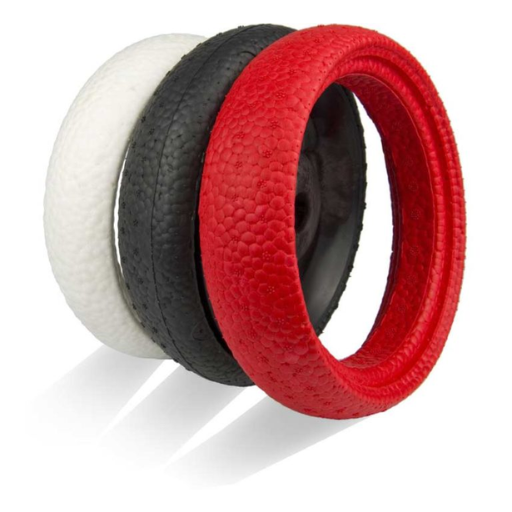
ETPU, or expanded Thermoplastic Polyurethane, is commonly known to be safe for human health and the environment provided it is used correctly and thrown away properly. To reduce toxic chemicals, this product uses supercritical carbon dioxide as a blowing agent while being made. Furthermore this material consists of substances which do not release any dangerous gases under normal conditions of use. However improper disposal or degradation of any synthetic items may cause environmental problems therefore they should always be managed responsibly by recycling where possible.
What Are the Potential Health Risks of Using TPU?
The health hazards associated with TPU (Thermoplastic Polyurethane) are generally low if used as directed; however there can be some concerns among individuals who have allergic reactions towards specific chemicals used in making TPUs such as skin irritation or sensitization. Breathing difficulties could arise from prolonged exposures to dusts or fumes emitted when TPUs are manufactured, heated or burnt hence adequate ventilation must be maintained by workers handling them within industrial settings alongside using appropriate protective gear . Basically consumers need not worry about their safety once they purchase finished goods made from TPU but care should be taken during processing stages and disposal methods so as not to expose ourselves into unnecessary risks.
How Does Thermoplastic Polyurethane Affect the Environment?
There are multiple impacts on the environment by Thermoplastic Polyurethane (TPU). First of all, it is commonly derived from non-renewable petroleum sources which depletes fossil fuels. During manufacturing, production processes can release greenhouse gases and volatile organic compounds that pose health risks as well as being dangerous for the earth’s atmosphere. Nevertheless, one desirable characteristic of TPU is its recyclability; this means that if properly managed it can be reprocessed and reused many times thus reducing waste produced. Also being worked on are biodegradable TPUs with the potential to minimize long-term environmental effects associated with them. Finally, disposal methods should be taken into account alongside recycling techniques in order for TPU’s ecological footprint to be lessened while at the same time improving its sustainability credentials.
Are There Safe Handling Practices for TPU Material?
According to the very best internet sites, there are some safe practices which should be followed when handling TPU materials. They include:
- Personal Protective Equipment (PPE): Workers have to put on suitable PPE such as gloves, safety glasses and respiratory protection so as not come into contact with their skin or inhale dust or fumes.
- Ventilation: Ensure good ventilation in work areas where TPU is being processed so that workers are not exposed to potentially harmful vapours and dust. Local exhaust systems may work better for this purpose.
- Storage and Disposal: Keep TPU in cool dry places away from sunlight and incompatible substances. Dispose of waste according to local regulations while considering recycling where possible for environmental conservation.
By following these precautions, much can be done towards reducing the risk involved in handling TPU hence making the workplace safer.
What are the Mechanical Properties of ETPU?
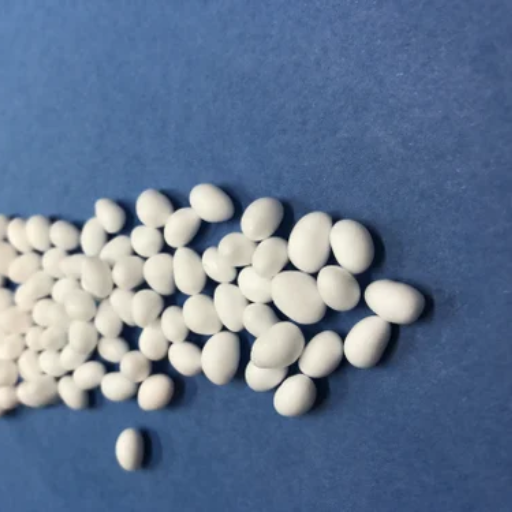
Expanded Thermo plastic polyurethane has a combination of mechanical characteristics which are unique and thus favored for different uses. It boasts of great stretchiness, bounciness and impact resistance too. These features make it have good shock absorption properties hence being used as a component in sports equipment, automobile parts among others where there is need for excellent cushioning. Moreover, ETPU has an appropriate balance between hardness and flexibility so that even under repetitive strain or change in temperature it can still keep its shape while performing well . In addition to this quality also being light weight contributes much on various industries because of its long life span.
What Makes ETPU Highly Elastic?
What makes ETPU highly elastic is the peculiar cellular structure inherent in TPU polymers themselves coupled with other factors like molecular weight distribution and crosslinking density. The expanded construction comprises multiple closed cells that offer both ductility and resilience; compressibility under pressure followed by quick recovery back into original form accounts significantly for large amounts of energy return as well as ability to provide cushioning effect. Again, soft segments within hard segment regions along with chain flexibility across different levels all serve towards making thermoplastic polyurethane possess elasticity necessary for continuous service under wide ranging environmental conditions with varying degrees of stress applied over time i.e., they give strength which gives stretchability needed by such materials but at same time ensuring durability when used repeatedly or exposed changing temperatures frequently accompanied by moisture ingress etc thereby leading into enhanced performance during use especially sports activities involving rapid body movement.
How Does the Compressive Mechanical Properties of ETPU Stand Out?
Among its many qualities, the compressive mechanical abilities of ETPU are extraordinary because it can bear huge amounts of pressure while still retaining form and function. Such feature is mainly due to a unique cell structure in this material that evens out distribution of forces over them as well as allowing quick recovery after being deformed. Apart from serving as an effective shock absorber with closed cells, these configurations also ensure that even after several rounds compression testings it remains intact. Moreover, among other things soft parts alternate with hard ones within TPU polymer matrix which adds up elasticity for wider temperature range operation together with durability of the substance under various environmental conditions. In view therefore structural soundness vis-a-vis ability to bounce back following impact loads makes ETPU ideal where high energy return coupled with superior resistance against hitting objects is needed most.
What is the Effect of Density on ETPU Properties?
The impact that density has on ETPU properties is huge and diversified. Normally, the higher the density of ETPU, the more long-lasting it becomes apart from having improved tensile strength as well as resistance to abrasion which are all necessary for heavy-duty use. Conversely, low-density ETPUs provide better cushioning but higher flexibility too while still being good shock absorbers due to their increased capacity for energy return thus making them suitable for comfort-focused applications or those requiring impact absorption abilities. Another thing about densities in relation to thermal insulation capability is that usually low density types offer better heat preservation especially within certain surroundings where this may be needed most such as during winter seasons etcetera; therefore balancing out different densities is important in order for it to meet specific needs within various industries or among consumers.
How is ETPU Fabricated and Molded?
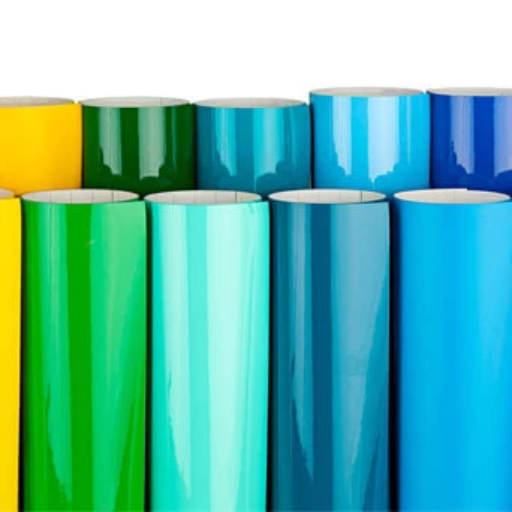
ETPU (Expanded Thermoplastic Polyurethane) is manufactured and shaped by a range of specialized methods. TPU pellets are first expanded with steam to produce small, closed-cell foam beads. These beads are then cooled down and solidified. In the course of molding, the expanded beads are put into a mold and exposed to heat as well as pressure; where this makes them stick together thereby creating an unbroken elastic substance; also these setting controls at what temperature or amount of force should be applied during manufacture so that it may fuse perfectly thus forming ETPU properties eventually required . This particular procedure enables production of parts with outstanding flexibility along with excellent cushioning and strong impact resistance.
What are the Steps in the ETPU Process?
There are several key steps to the ETPU process — these steps change raw TPU pellets into expanded foam beads and then molded products. Here are those primary steps:
- Pre-expansion: Raw TPU pellets expand when exposed to steam, making them bloat into light closed-cell foam beads
- Stabilization: Then these expanded beads are cooled down and left to stabilize which is an important step because it helps in achieving evenness as well as prevents premature fusion.
- Molding: The stabilized beads get placed into a mold where they fuse together due to controlled heat and pressure thus forming a continuous material having required properties; this also determines final shape and features of an ETPU product.
- Demolding and Finishing: After completion of molding process, demoulding follows whereby the item is taken out from its mould; at this stage any necessary finishing like trimming or surface treatments are done so that the final product meets quality standards.
How Does Injection Molding Work for ETPU?
Injection molding for ETPU (Expanded Thermoplastic Polyurethane) is an intricate process with controlled steps that are used to shape the expanded foam beads. First, pre-expanded ETPU beads are placed in a mold made for that purpose. Then the mold is heated so as to cause the beads expand more and stick together due to applied pressure. In ETPU injection molding unlike traditional injection moulding where molten plastic is injected into the mold; natural expansion of the beads is used to completely fill up cavity of the mould. Through this method, it becomes possible to manufacture parts having great extensibility, improved cushioning effect and outstanding resistance against impacts. Temperature and pressure control in this technique is very precise thus ensuring evenness of quality throughout the whole molded article with universal properties which makes it suitable for high performance materials applications.
What is the Significance of Extrusion in ETPU Production?
In the production of expanded thermoplastic polyurethane (ETPU), extrusion is very important because it helps in forming continuous bead sizes which are uniform as well. In this process, TPU pellets are melted and squeezed through a hole to produce an even mixture that is then cut into regular balls. The reason why this consistency matters is that it ensures each final product has uniform expansion and performance features too. Additionally, extrusion allows for high throughput thus making it suitable for large-scale manufacturing. Through precise control on temperature, pressure and feed rates during extrusion; ETPU beads should portray certain properties like stretchiness, bounce-back ability or even long-lastingness which are required for use in high-performance applications.
What Are the Applications of ETPU in Various Industries?
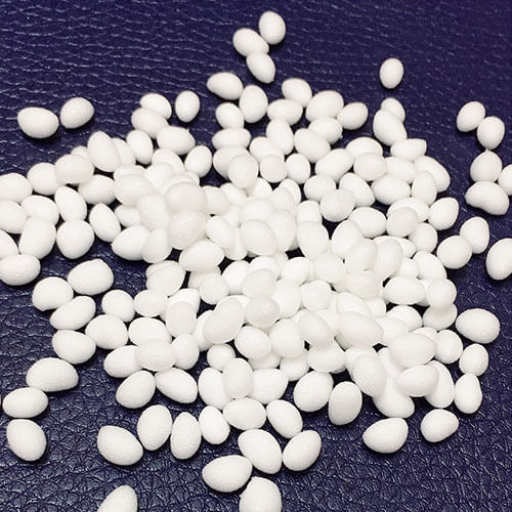
EPU (Expanded Polyurethane) is a very versatile material used in many different industries because of its unusual features such as flexibility, cushioning and shock resistance. In the shoe making business for example they use EPU to make soles that are not only comfortable but also long-lasting. In automotive sector it is used to create light-weight but strong interior parts as well as seats. Sports industry benefits from using EPU too – protective gears like helmets or pads are made out of this stuff too! And let’s not forget about packaging: everything needs some sort of protection during transport – be it fragile objects or something else entirely! So companies do their best by packing items with shock absorbing materials which can include EPU sometimes; another place where you can use it in consumer goods would be ergonomic furniture design or even toys made from flexible high-performance materials would benefit greatly from such a material like this one.. There isn’t much that you cannot do with this material and thanks to these great properties EPU has become an ideal choice for many demanding applications.
Why is TPU Widely Used in Footwear?
Footwear applications commonly use TPU (Thermoplastic Polyurethane) because it combines durability, flexibility and comfort in a remarkable way. This increases the life-span of shoes by providing good wear resistance especially at the soles which are most susceptible to wearing out quickly. Flexibility of this material allows it to adjust itself according to natural movements of feet thereby enhancing comfort as well as support offered by them during locomotion. Another reason why people prefer TPU for their shoes is that it is light weight thus making it perfect for both sports and casual wears where heavy materials would make one uncomfortable or sluggish while moving around. It can also absorb shocks better than any other plastic available hence used in areas expected to experience high impact forces such as cushions or buffers designed for protecting fragile objects against breakage caused by dropping them accidentally. All these features together therefore make TPU among the best materials ever discovered for making strong but gentle on foot skin shoes that last long without feeling tired even after being worn throughout an active day.
How is ETPU Applied in Automotive Industries?
In the automobile trade, ETPU (Expanded Thermoplastic Polyurethane) is used widely for strengthening interior and exterior parts’ performance and durability. It is especially recognized as light-weightedness that reduces the overall weight of a car and hence advances fuel consumption rates. This substance offers great cushioning properties and is therefore employed in seats while its exceptional impact resistance makes it ideal for use in inner panels where passenger safety can be improved most effectively by such materials. Moreover, being resistant to severe weather conditions allows utilizing ETPU under-the-hood components as well as insulation layers too. Bumpers are other areas where versatility finds its place since this material can absorb energy during collisions so much better than anything else does; thus contributing greatly into longevity of vehicles and their crashworthiness either.
What are Other Common Uses of Thermoplastic Polyurethane Elastomer?
Because of its excellent properties, thermoplastic polyurethane elastomer (TPU) is used in many industries. In electronics, TPU coats cables and wires to improve their wear resistance while maintaining flexibility and durability. Medical catheters, tubes for medical purposes and wearable devices are made from biocompatible materials such as TPU which finds use in the medical field too. Furthermore, TPU can be applied on industrial hoses, conveyor belts or other protective coatings because of its strong chemical resistivity and high resilience to abrasion. These examples show the versatility of this material across different sectors.
Can ETPU be Recycled or Repurposed?
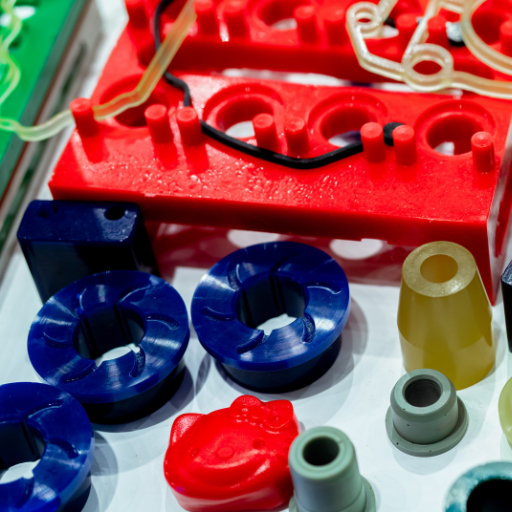
The Expanded Thermoplastic Polyurethane (ETPU) may be recycled or used again. Because of being a thermoplastic, it is possible to reprocess and reform ETPU many times without considerable degradation in its properties. The trash from ETPU can be gathered, granulated by grinding and then melted down to make new products which helps keep the planet sustainable as well as reducing environmental harm.
What are the Challenges in Recycling TPU?
Recycling Thermoplastic Polyurethane (TPU) is not easy. First of all, it has a high melting point which makes the process difficult and requires special equipment with higher energy consumption. Besides that TPU often contains fillers and additives that might spoil recycling affecting quality and uniformity of recycled material. Another important problem is contamination with other plastics or materials which can lead to deterioration in performance characteristics of recycled TPU. However, thanks to technological progress together with development in methods for better efficiency while recycling TPU – these obstacles are slowly disappearing.
Are There Sustainable Alternatives to ETPU?
Expanded Thermoplastic Polyurethane (ETPU) can be replaced by sustainable alternatives. One of these is known as biodegradable thermoplastic elastomers (TPEs), which have similar properties but degrade more easily in the environment. Recycled TPU is another choice – it can be recycled and used again, thereby reducing the need for new materials and cutting down on waste. There are also bio-based polymers made from renewable sources such as corn starch or sugarcane; they show great potential as environmentally friendly substitutes for traditional petroleum-based TPU. These options promote green living habits and help to decrease carbon footprints across many different industries.
How Can ETPU be Repurposed for Other Uses?
There are many different ways to reuse ETPU so as to extend its life and minimize garbage. For instance, it can be used as a cushioning material for shoes due to its lightness and elasticity that guarantees comfort and durability. Another example is recycling ETPU to make seat cushions, padding or insulation materials in the motor industry since it has energy absorption properties. Moreover, sports equipment like protectors and helmets are now manufactured with this substance because of its ability to absorb shocks better than any other material thus ensuring safety during games or training sessions. The invention of advanced methods of recycling have made it possible for people to collect used ETPUs then reprocess them into new products thereby creating a circular economy which preserves nature by reducing waste.
Frequently Asked Questions (FAQs)
Q: What is Engineered Thermoplastic Polyurethane (ETPU)?
A: Engineered Thermoplastic Polyurethane (ETPU) is a type of thermoplastic elastomer widely used in applications requiring high elasticity and durability. It combines the properties of plastic and rubber, making it a unique polymer that is both flexible and strong. It is often used to fabricate foam materials.
Q: How is ETPU foam produced?
A: ETPU foam is produced through a process called molding. This involves heating the polymer to a specific foaming temperature before injecting a foaming agent. The foam structure is then carefully controlled to achieve desired properties such as density, cell size, and elasticity.
Q: What are the main applications of ETPU foam?
A: ETPU foam is widely used in the sports, automotive, and footwear industries due to its high elasticity and durable properties. It is also used in the medical field for orthotics and prosthetics, thanks to the material’s ability to withstand repeated stress without degrading. Specifically, expanded thermoplastic polyurethane (ETPU) finds extensive use due to its lightweight and resilient nature.
Q: Are there any toxicity concerns with ETPU?
A: While Engineered Thermoplastic Polyurethane itself is generally considered safe, the toxicity of ETPU foam can depend on various factors such as the type of foaming agents used and the specific additives incorporated in the production process. It’s crucial to ensure that the materials and chemicals used comply with health and safety standards.
Q: What are the properties of ETPU foam that make it suitable for various applications?
A: The properties of ETPU foam that make it highly suitable for various applications include its high elasticity, excellent abrasion resistance, and good flexibility at low temperatures. Additionally, the ratio of TPU can be adjusted to tailor the foam properties to specific needs.
Q: How does the foaming behavior of TPU affect its final properties?
A: The foaming behavior of TPU, including factors such as foaming temperature and the type of foaming agent used, significantly impacts the final properties of the foam, including its cell size, density, and overall durability. Controlling these variables allows manufacturers to produce foams with enhanced specific properties.
Q: What are the benefits of using supercritical CO2 in ETPU foam production?
A: Using supercritical CO2 as a foaming agent in ETPU foam production offers several benefits, including better control over cell size and foam structure, reduced environmental impact, and the ability to create microcellular thermoplastic polyurethane with enhanced physical properties.
Q: What factors influence the molecular structure of ETPU?
A: The molecular structure of ETPU is influenced by the ratio of hard segment to soft segment in the polymer, the type of copolymer used, and the additives incorporated during the manufacturing process. These factors collectively determine the material’s mechanical properties, elasticity, and durability.
Q: Can ETPU foams be recycled?
A: Yes, ETPU foams can generally be recycled through mechanical recycling methods. The process involves grinding the foam back into granules, which can then be reprocessed through extrusion or injection molding to create new products. However, the effectiveness of recycling may depend on the specific formulation and properties of the initial foam.
Q: How does the density of ETPU foam affect its performance?
A: The density of ETPU foam plays a crucial role in its performance. Lower density foams are lighter and provide better cushioning, making them ideal for applications in sports and footwear. Higher density foams offer more strength and durability, suitable for automotive and industrial applications. The density is adjusted during the foaming process to tailor the foam to specific application requirements.






